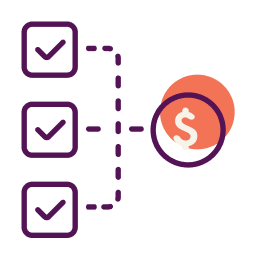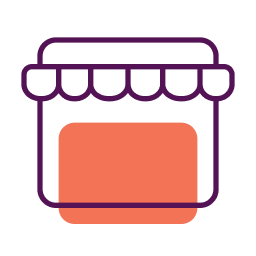Full steam ahead! Which financing option is best for you?
Most business owners know that the saying “It takes money to make money” is all too true. You need cash to run your business, and if you want to see growth, there is a chance you may have to look to external financing to help fuel that upward momentum.
But the small business lending space can be confusing, especially when you’re already busy running the day-to-day operations of your business and you don’t have time to thoroughly research all potential options.
Here’s the cheat sheet you need to figure out your options. Let’s explore the difference between bank loans and non-bank loans, and which one may be the best fit for your business.
The Traditional Financing Option
The first thing most small business owners think of when they need a loan is walking into their bank and sitting down, face to face, with a banker to ask for money. But if you *were* to walk into a bank today to ask for a small business loan, you’ve got about an 82% chance of being denied. Since the recession in 2008, bank lending to small businesses has declined (and only continues to decline).
Although these numbers are discouraging, there are reasons you should still should consider applying for a traditional bank loan.
Lower Interest Rates – Banks offer the lowest interest rates possible. If you can get approved by the banks, it will be the most affordable option.
Borrow locally – You may already have a relationship with a local bank, or impeccable references in the local community, which could allow you to more easily secure a loan.
But, beyond the high chance of rejection, there are a few other downsides to bank loans.
Lengthy qualification process – We may live in the digital age, but getting a loan from a traditional bank is not a speedy process. Their underwriting procedures still require old-fashioned legwork, and you may have to wait weeks (or more) to find out if you’ve qualified for a loan, and perhaps even longer to get the funds in your account.
Credit and collateral requirements – Banks aren’t going to give you a loan based on a good idea or even a favorable business climate. To start, they are going to want you to have stellar credit. Both personal and business credit scores. They also often want collateral – something that they can take from you to recoup their losses should you default on the loan. Many small business owners lack sufficient collateral or if they do have it, they may be unwilling or unable to put assets – such as a home – up as collateral against the loan.
The Growing Alternative
For small business owners that get denied by the bank, or don’t have the time to go through a lengthy application process, alternative, non-bank loans are becoming a popular option.
So, what are non-bank loans?
Non-bank loans are actually several different types of non-traditional loans often collectively referred to under the umbrella of “alternative lending.”
Here are few (of many) examples:
Term loans: These are loans with a set repayment time and a set number of payments. They can have a fixed or variable interest rate. Terms can be as short as 6 months or as long as ten years, with payments made daily for shorter-term loans and monthly for longer-term loans.
Peer-to-peer (P2P) lending: This type of lending allows small business owners to borrow money from other people just like them, i.e. their “peers.” P2P lending is usually facilitated through specialized online marketplaces where a borrower’s creditworthiness is double-checked. Borrowers with bad or no credit may still be able to borrow money, but at high interest rates.
Factoring: One of the oldest forms of alternative lending, factoring companies will give you a cash advance based on about 80% of your outstanding receivables. These types of loans are great for a quick cash infusion when you know you have funds coming soon, but can’t wait long enough for the customer to pay you. The factoring company generally takes over collection of your invoices and will later pay you back the remainder still owed to you, minus their fees.
Why might a small business owner seek out an alternative loan?
Speed – Some types of loans can result in funds within as little as 2 days. Non-bank lenders tend to take advantage of today’s technology to speed up the underwriting process. If your business needs money fast, then a non-bank loan such as a short-term loan is often the quickest choice.
Fewer credit and collateral requirements – Many non-bank loans have different underwriting standards than traditional banks. With some alternative lenders, you only need to undergo a credit check and send in 3 months bank statements to get started. Keep in mind though, that generally speaking, the lower the cost of the loan, the more documentation you will need to submit.
However, as you probably expected, alternative loans also have downsides, such as:
Higher interest rates – Non-bank loans will always have higher interest rates than bank loans. This is this is the most important thing to know.
Multiple types of non-bank loans – With the different types of non-bank loans out there, it’s important to understand which one is right for you. You may think you want to factor your invoices because you have outstanding receivables, but perhaps you could have qualified for an SBA loan, and spent less in interest and fees. Research the different loan products available before signing on the dotted line.
Which is Best for Your Business?
With a better understanding of what makes these types of lending different, we hope you’ll be able to confidently decide where is the best place to start your financing search. If you are looking for a long-term loan with a low interest rate, it’s worth it to take the time to apply for a traditional bank loan. But if you need funding fast, or have bad credit or no collateral, you may be better off starting with an alternative lending option.
This article was originally written on March 25, 2015 and updated on October 20, 2020.



Have at it! We'd love to hear from you and encourage a lively discussion among our users. Please help us keep our site clean and protect yourself. Refrain from posting overtly promotional content, and avoid disclosing personal information such as bank account or phone numbers.
Reviews Disclosure: The responses below are not provided or commissioned by the credit card, financing and service companies that appear on this site. Responses have not been reviewed, approved or otherwise endorsed by the credit card, financing and service companies and it is not their responsibility to ensure all posts and/or questions are answered.